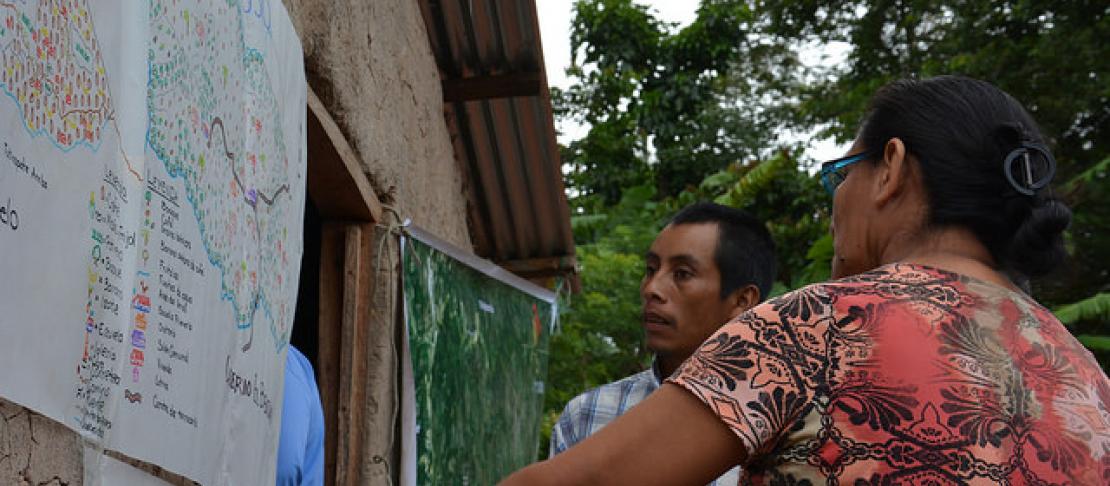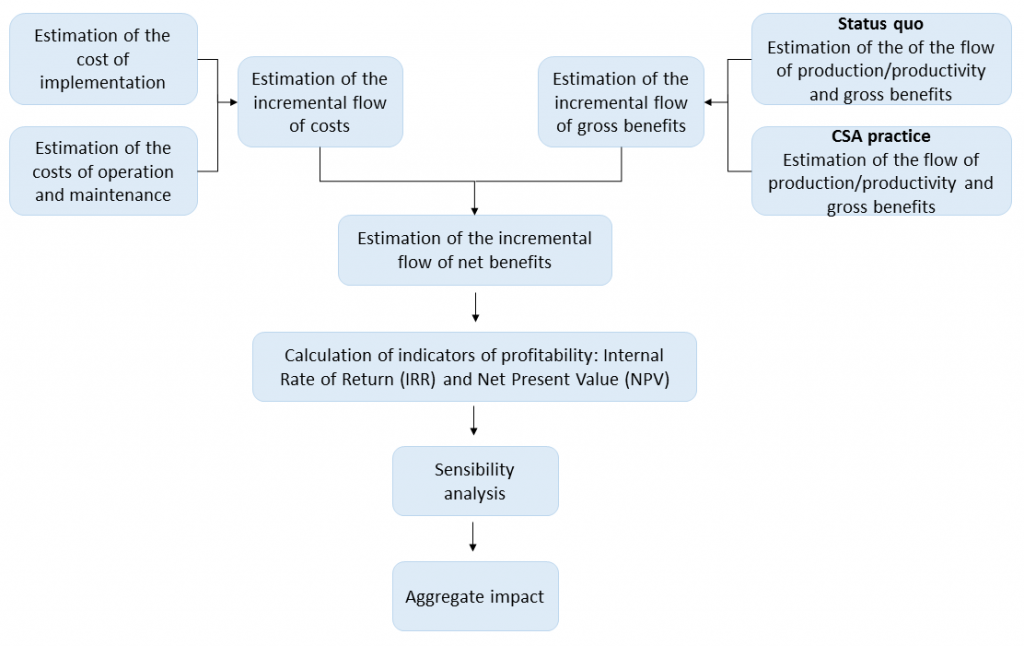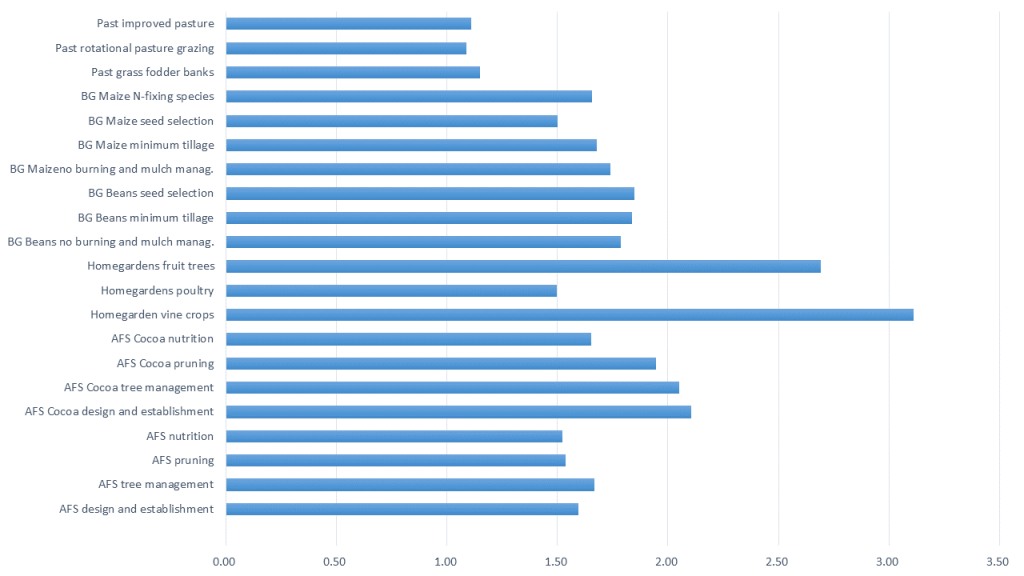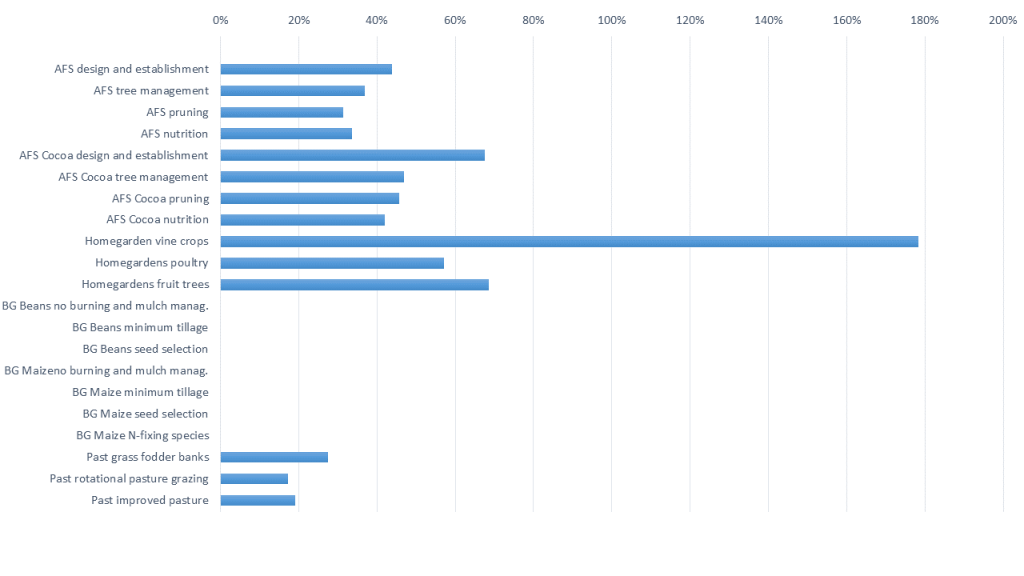Are climate-smart agricultural practices economically desirable?

Cost-benefit analysis of agricultural practices provide evidence that prioritizing investments help smallholders adapt to climate change.
According to the United Nations Development Program (UNEP), developing countries will require between USD 140-300 billion per year until 2030 to adapt to climate change. These figures represent a major challenge for the international community, and especially for the countries most vulnerable to the effect of climate change, as most of them also face serious socio-economic problems.
Bearing in mind the importance of such countries as suppliers in the international food system and their economic dependence on agricultural commodities, it is essential to have evidence on the costs and benefits of adopting various measures of climate adaptation. In doing that, decision-makers can better target investments towards the most promising climate adaptation measures, thus achieving the best return for each dollar spent.
As part of the study, Climate-Smart Agriculture Investment Priorization in the Territories of Incidence of MAP and CCAFS, the Tropical Agricultural Research and Higher Education Center (CATIE) through its Mesoamerican Agroenvironmental Program (MAP) and the CGIAR Research Program on Climate Change, Agriculture and Food Security (CCAFS) conducted a cost-benefit analysis of 15 agricultural practices in the Trifinio region (crossborder area between Guatemala, Honduras and El Salvador) and the department of Matagalpa, in Nicaragua. Such practices had been previously prioritized as the result of a qualitative evaluation that used indicators to measure their contribution to the tree pillars of the climate-smart agriculture (CSA). The cost-benefit analysis complemented the evaluation of these practices.
| Systems | Practices |
|---|---|
| Agroforestry systems (coffee and cocoa) | Design and establishment of agroforestry systems |
| Tree management | |
| Pruning (coffee and cocoa) | |
| Pest and disease management | |
| Nutrition of perennial crops | |
| Homegardens | Food and poultry production |
| Management of fruit trees | |
| Sowing and management of vine crops | |
| Basic grains (maize and beans) | Minimum tillage |
| Maize with N-fixing species | |
| Seed selection | |
| Mulch management without burning | |
| Pastures | Grass fodder banks |
| Rotational pasture grazing | |
Improved pastures |
List of the evaluated agricultural practices
The economic analysis followed a standard application of cost-benefit analysis, yet adapted to studies focused on CSA[1]. The current situation was contrasted with a scenario in which each of the practices are adopted, thereby identifying and quantifying the economic and environmental implications of their adoptions. To that end, changes in costs and revenues, as well as protection of biodiversity and carbon sequestration were considered. The annual flow of net benefits was then estimated with indicators of economic performance and finally a sensitivity analysis was performed to report the aggregate impact, which takes into account the results of the previous analyses.

Figure 1: Steps of the cost-benefit analysis [2]
The results show that even though most of the CSA practices have a higher cost of implementation than the status quo, these costs are offset by a number of benefits derived from productive diversification. Among the main benefits are the additional income generated by new products, greater resilience to negative economic impacts (such as falling prices) and greater availability of food for the family. Furthermore, many of the CSA practices also generate environmental co-benefits, such as the protection of biodiversity, reduction of soil erosion and capture of CO2.
The economic analysis indicates that all the CSA practices have a cost-benefit ratio greater than 1, that is, the benefits outweigh the costs. In Nicaragua, the practices associated with basic grains, for example, increase their cost-benefit ratio from 1.67 to 1.85 when they adopt the practice “seed selection” instead of maintaining the status quo. Regarding the profitability, sowing and management of vine crops in homegardens is the most profitable practice in both Nicaragua and Trifinio with internal rates of return of 178% and 141% respectively. On the other hand, the practices associated with livestock are those with the least attractive economic indicators, mainly in Nicaragua, where the cost-benefit ratio is very close to 1, which means by implementing these practices, the producers do not obtain significant economic benefits.
Fig 2. Cost-benefit ratio of the CSA practices that were evaluated (click to enlarge).
Fig 3. Internal rate of return (IRR) of the CSA practices. (click to enlarge).
Jaime Echeverría, consultant responsible for the study, explains that although practices such as grass fodder banks produce good cash flows, they require high initial investments, capital that may not be available to many smallholders. This could be an explanation of why such practices are not often adopted despite being frequently promoted among smallholders.
The authors of the study conclude that from an economic point of view, the adoption of the CSA practices that were analyzed is desirable, especially those related to homegardens, which were particularly profitable with low initial investments. The assessment of the impact of CSA practices on CO2 capture and biodiversity conservation shows that the CSA practices have great potential to generate additional income should a payment for ecosystem services program be established. Furthermore, since CSA is by definition meant to provide greater climate adaptation and mitigation, when considering these factors the overall benefit of adopting a CSA practice is even greater. The economic analysis and the evaluation of these practices through the lens of CSA provide valuable evidence to help prioritize investments to help smallholders adapt to climate change.
[1] Sain, G.; Loboguerrero, A. M.; Corner-Dolloff, C.; Lizarazo, M.; Nowak, A.; Martínez-Barón, D.; Andrieu, N. 2016. Costs and benefits of climate-smart agriculture: The case of the dry corridor in Guatemala. Agricultural Systems.
[2] Sain, Gustavo. 2015. Metodología para la Evaluación de la Rentabilidad de Introducir Tecnologías ASAC en el Sistema de Producción Agropecuario. Reporte preparado para CIAT.
Jorge Sellare is consultant of the Mesoamerican Agroenvironmental Program at CATIE.





